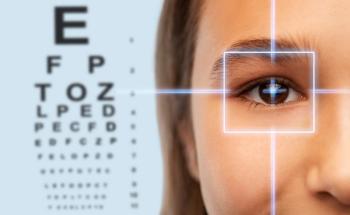
Music creates soothing effect for babies during retinopathy of prematurity examinations
The white noise and classical music listened to by the preterm infants during ROP examinations showed positive effects on pain and heart rate and oxygen saturation values.
Researchers from Turkey reported that the introduction of white noise and music had a beneficial effect during examinations of preterm infants with retinopathy of prematurity (ROP). The lead author, Dr Mediha Tok Cevik is from Department of Ophthalmology, Sişli Hamidiye Training and Research Hospital, Istanbul, Turkey; she was joined in this study by coauthors Dr Ustabas Yildiz and Dr Sadik Görkem Cevik from the Department of Ophthalmology, Yuksek Ihtisas Education and Training Hospital, Bursa, Turkey.
The investigators conducted a 1-year study from August 2020 to August 2021 to determine how white noise and classical music affected pain and physiologic parameters while examining infants with ROP in a neonatal intensive care unit.
Ninety preterm infants were included and evenly and randomly divided into three groups: the control group, the white noise group, and the classical music group.
The infants’ responses to pain were evaluated using the Premature Infant Pain Profile.
Effects on pain and physiologic parameters
During and after the examination, Dr Cevik reported the positive beneficial effects of the interventions on the infants’ responses.
Before the examination, the heart rates, oxygen saturation levels, and pain scores in the 3 groups did not differ significantly.
During the examination, the peak mean heart rates in the white noise group, 181.17 ± 15.76/minute and the classical music group, 173.30 ± 20.66/minute, were lower than that in the control group, 189.63 ± 63.39/minute. After the examination, the respective peak mean heart rates were 150.10 ± 17.03/minute, 146.67 ± 18.17/minute, and 158.57 ± 19.95/minute.
During the examination, the respective oxygen saturation values were higher in the white noise and classical music groups, 93.60 ± 3.87/minute and 95.73 ± 2.52/minute, compared with the control group, 92.50 ± 3.51/minute. After the examination, the respective values were similar, 97.83 ± 1.93/minute, and 98.27 ± 1.82, and 94.70 ± 3.32/minute.
Likewise, during the examination, the pain scores were higher in the control group compared with the white noise and classical music groups, 12.27 ± 1.70, 9.70 ± 3.02, and 11.2 ± 2.28; the same was true after the examination, with respective values of 7.00 ± 1.68, 3.60 ± 2.11, and 3.77 ± 1.83.
The white noise and classical music listened to by the preterm infants during ROP examinations clearly had positive effects on pain and heart rate and oxygen saturation values.
The authors commented, “In the study, we found that the non-pharmacologic techniques used during ROP examinations reduced preterm infants’ pain scores and peak heart rates, and they had higher oxygen saturation values. We think that the frequent use of musical methods such as listening to white noise and classical music during painful interventions such as ROP examinations for infants is effective in pain management and the regulation of physiologic parameters. More randomized controlled trials should be devoted to this topic.”
Newsletter
Get the essential updates shaping the future of pharma manufacturing and compliance—subscribe today to Pharmaceutical Technology and never miss a breakthrough.












































